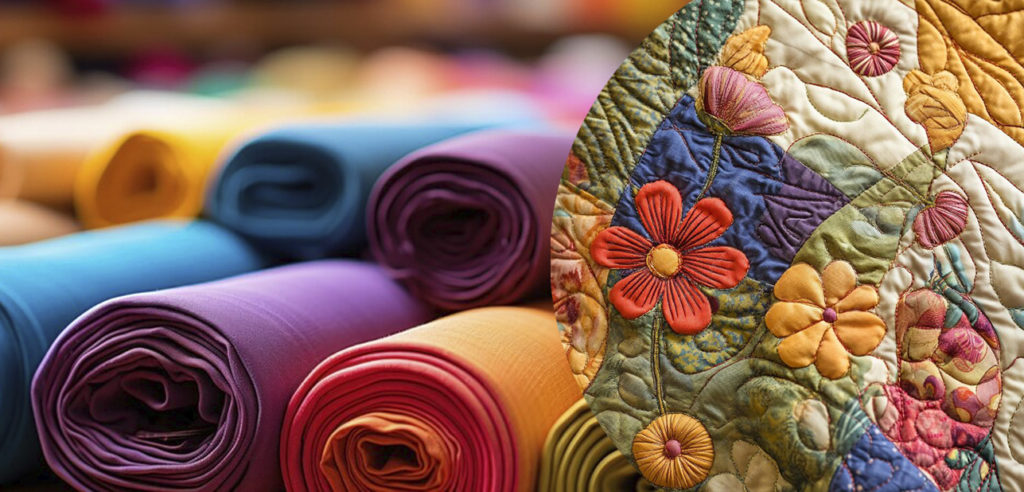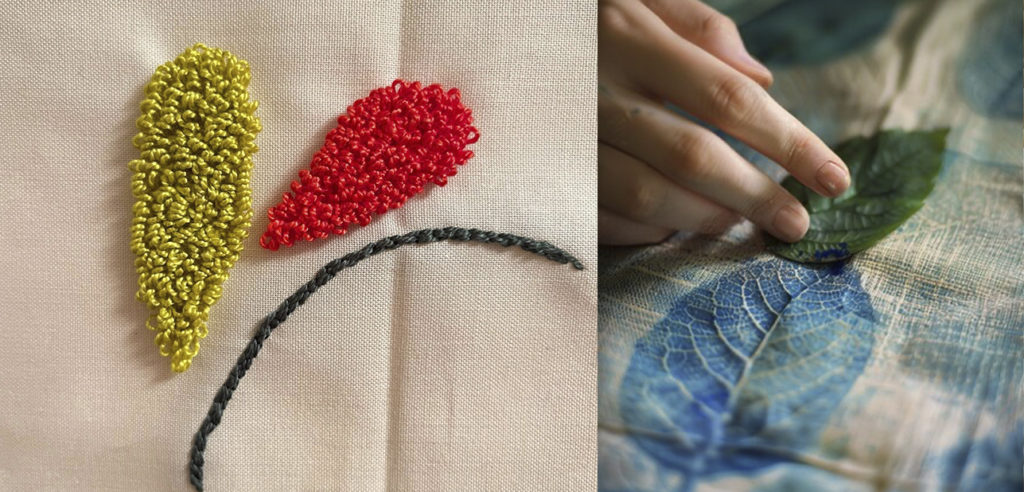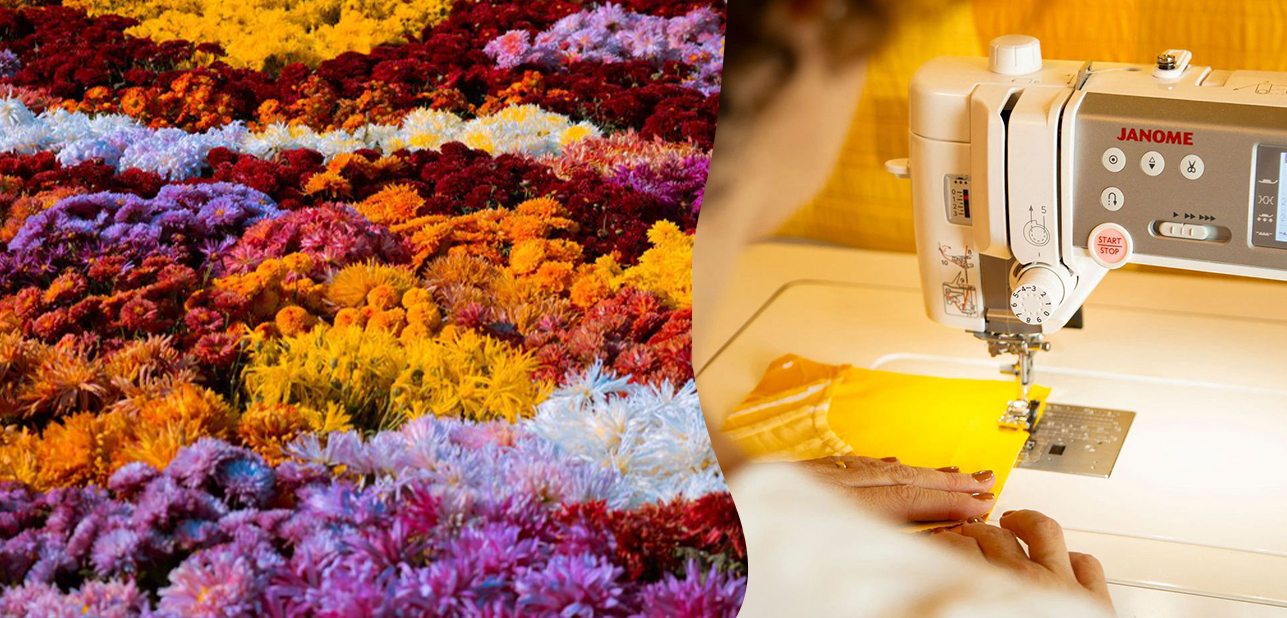Fabric landscape quilting turns familiar sceneries into soft, stitched canvases, breathing new life into textile art. This blog will delve into what fabric landscape quilting is, uncover useful tips for beginners, and introduce various techniques that enhance this craft. If finding inspiration for your quilting projects sometimes feels tricky, we’ll show you how to capture natural beauty and translate it into your designs.
We will also introduce you to Carolina Oneto, a skilled quilter whose expertise can elevate your quilting journey. With her guidance, mastering the nuances of fabric landscape quilting becomes not only achievable but also enjoyable. Whether your goal is to create breathtaking pieces for display or to gift someone a touch of handcrafted beauty, the insights here can serve as your guide.
Ready to stitch your own masterpiece? Let’s explore the threads and fabrics that make landscape quilting a beloved craft among artists and hobbyists alike.

Unveiling the Craft of Fabric Landscape Quilting
Fabric landscape quilting is a vibrant art form where quilters create picturesque scenes using fabric. This method blends various quilting techniques to craft landscapes that are as diverse as nature itself. Starting with a photo or a detailed sketch, quilters translate these images into fabric using careful color selection and meticulous placement. This process not only captures the essence of the landscape but also allows each artist to leave a personal touch on their work.
The Benefits of Fabric Landscape Quilting
Engaging in fabric landscape quilting offers a step beyond traditional patterns. This technique provides a platform for quilters to experiment with artistic expression through the manipulation of textile colors, textures, and compositions. Such work not only stands out for its beauty but also for its ability to convey the complexities of natural vistas. Moreover, the integration of diverse quilting practices, like free-motion stitching and fabric painting, broadens the creative scope, allowing each quilt to become a unique art piece.



Key Materials Used in Fabric Landscape Quilting
To embark on fabric landscape quilting, several materials are essential. Quilters gather fabrics of varied types—cotton, batiks, silks, and organzas—to match the textures and hues of natural settings. Basic sewing supplies and a reliable sewing machine facilitate the assembly of these landscapes. For those who delve deeper, specialized tools like fusible webbing for appliqué work, fabric paints for adding details, and precise quilting rulers help in achieving the desired artistic effects. Each tool and material plays a pivotal role in bringing the fabric landscapes to life, making them as dynamic and engaging as the scenes they represent.
Crafting Vistas With Fabric Landscape Quilting
Fabric landscape quilting is a captivating craft that blends traditional quilting techniques with artistic representation to recreate vivid landscapes from fabric. This approach allows quilters to express their connection to nature and personal creativity. Here, we provide some key tips to help you get started with fabric landscape quilting, enhancing your ability to craft detailed and beautiful pieces.
- Understanding Terrain Lines
To effectively quilt landscapes, think in layers and depth rather than flat patterns. Utilize quilting lines strategically to create illusions of distance. Closer lines can make parts of your landscape appear far away while spacing them out brings elements to the foreground. This technique helps build a three-dimensional feel within the quilt.
- Creating Depth with Quilting Lines
For elements like distant mountains or fields, stitch lines closer together to portray vastness. As landscape features approach the foreground, like bushes or trees, widen the spacing. This varying line density aids in creating a visual gradient from background to foreground, adding depth and interest.
- Enhancing Natural Features
Alter the direction and spacing of your quilting to emulate natural textures. For instance, curved stitching can mimic rolling hills, while jagged lines might represent rocky terrains. These subtle changes make your fabric landscapes more realistic and visually engaging.
- Detailed Focus Areas
Focus on key features like buildings or distinctive trees by using detailed quilting patterns or tighter stitching. This not only draws attention to these elements but also adds layers to your storytelling through textiles, making central themes stand out against the broader landscape.

- Sky and Horizon Quilting
Incorporate different stitching patterns for the sky, using smaller, compact lines near the horizon that expand and space out towards the top of your piece. This mimics the natural look of the sky and adds depth to your quilted landscape.
- Experiment with Fabric Painting
Combine fabric painting with quilting for an enriched background. Painted layers can set a dramatic stage for your quilting, guiding the placement of lines and enhancing the overall texture and depth before you even begin stitching.
Mastering Techniques in Fabric Landscape Quilting

Fabric landscape quilting merges creativity with meticulous technique to bring vivid, picturesque scenes to life through textiles. This form of art quilting utilizes various approaches to replicate the intricate details of nature, allowing quilters to express their artistic vision. Here are some key techniques that help in crafting stunning fabric landscapes.
- Raw-Edge Appliqué
Raw-edge appliqué is perfect for adding texture to your quilts. Fabric shapes are cut with their edges left raw and then affixed onto a base fabric, ideal for depicting elements like foliage or rugged terrain. These pieces are placed and then secured using a straight or zigzag stitch, which not only holds the fabric but also adds to the visual texture.
- Fusible Appliqué
For quilters aiming for precision in their designs, fusible appliqué is invaluable. This technique uses fusible webbing to bond fabric shapes onto the base before they are stitched into place. It is especially useful for detailed landscape features such as trees or buildings, allowing for crisp edges and stable positioning.
- Piecing
Piecing is foundational in quilting. By sewing together pieces of fabric into complex blocks or larger units, quilters can construct varied landscape backgrounds like skies or water bodies. Techniques such as foundation piecing help manage intricate patterns or smaller fabric pieces, ensuring accuracy and a clean look.
- Thread Painting
Thread painting enhances a quilt’s texture and depth by using free-motion stitching to add detailed elements like clouds or water ripples. With the feed dogs lowered, quilters use colored threads to vary density and color, creating realistic and dynamic effects within the landscape.
Fabric Painting and Dyeing
When fabric alone doesn’t achieve the desired visual effect, painting and dyeing can add unique colors and textures. This method is used to pre-design backgrounds or highlight specific features within the quilt, employing brushes or sponges for application. Knowledge of color theory and fabric handling is crucial to ensure vibrant, lasting results.
Sparking Creativity in Fabric Landscape Quilting
Fabric landscape quilting offers endless possibilities to capture the beauty of nature with thread and fabric. Finding inspiration for these quilts can come from various sources, each providing unique perspectives and ideas. Here are some concise tips to help ignite your creativity:



- Explore Photography: Delve into landscape photos to study composition and color.
- Visit Natural Sites: Observe details in parks or gardens for real-world textures.
- View Artworks: Analyze landscape paintings for style and technique insights.
- Embrace the Seasons: Draw inspiration from the changing colors and themes of each season.
- Reflect on Memories: Use personal travel experiences to inspire quilt designs.
- Utilize Technology: Browse online for diverse landscapes and visual elements.
- Engage with Community: Participate in quilting groups to exchange ideas and gain new perspectives.
- Read Widely: Look for books on nature, geography, and even fantasy for unexpected inspiration.
- Sketch Outdoors: Bring a notebook to capture ideas as they come to you in the natural setting.
- Experiment with Materials: Mix different fabrics and textures to see how they influence landscape portrayal.
Each of these approaches can provide fresh ideas for your next fabric landscape quilting project, helping you to craft a quilt that not only depicts a scene but also tells a story.
Master Fabric Landscape Quilting with Carolina Oneto
Embark on your fabric landscape quilting journey with Carolina Oneto, a renowned mentor celebrated for her dynamic workshops and international exhibitions. Carolina’s expertise in fabric landscape quilting is matched by her passion for teaching, making her courses a beacon for both beginners and seasoned quilters.
What Carolina Oneto Offers
- Interactive Online Workshops: Engage directly with Carolina in live sessions, perfecting techniques from organic shapes to transparency effects.
- On-Demand Classes: Access pre-recorded lessons at your convenience to explore creative piecing and color theory on your own schedule.
- Guild Workshops and Lectures: Carolina offers customized presentations and hands-on sessions for quilting guilds, focusing on practical skills and artistic inspiration.
- Quilts and Artwork for Sale: Explore Carolina’s unique quilts available for purchase, each piece showcasing her blend of traditional and modern quilting styles.
- Educational Resources: Benefit from Carolina’s extensive online tutorials and blogs that delve into modern quilting trends and techniques.
Contact us to learn more about Carolina Oneto’s offerings and start transforming your quilting projects into masterpieces today.


